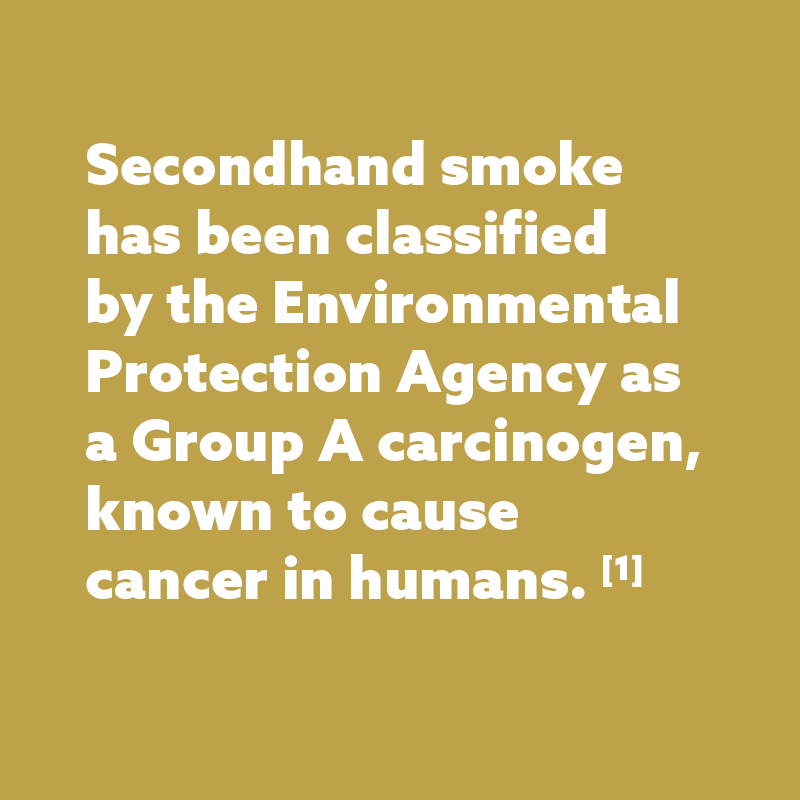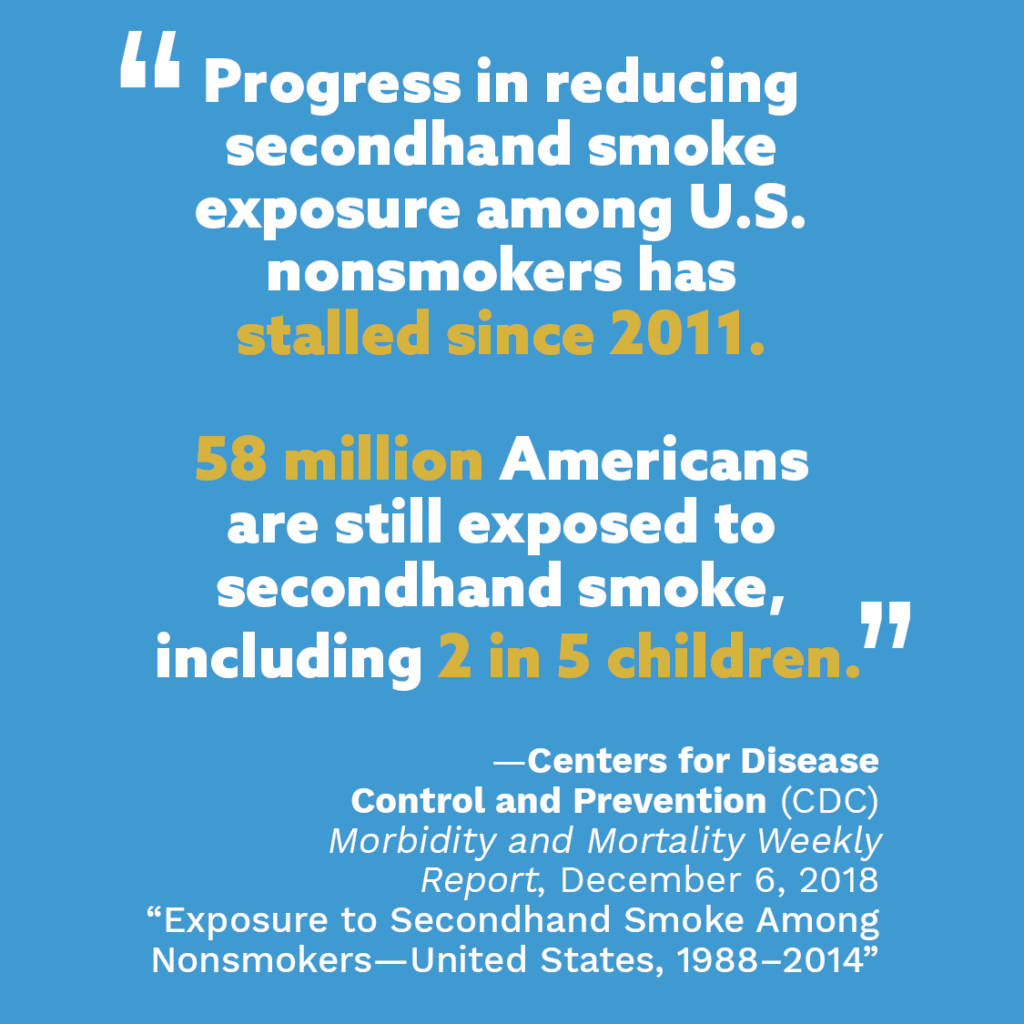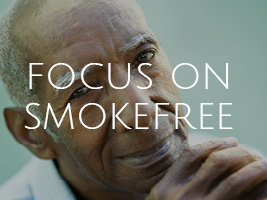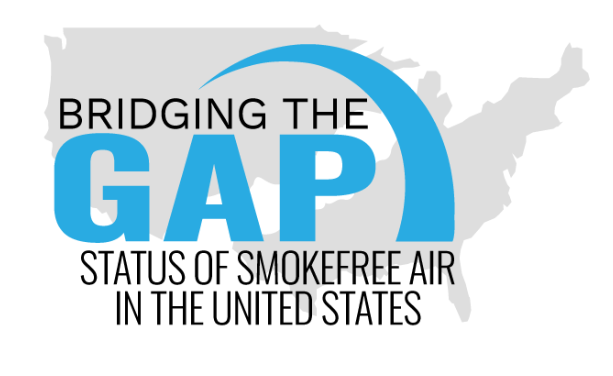With only 36.8% of people protected from secondhand smoke, disparities persist.

- 62.3% of Americans enjoy comprehensive smokefree protections in all public places and workplaces, including restaurants and bars. In contrast, in Kentucky, only 36.8% of the population is protected by this type of smokefree law. [2}
- Kentucky is one of the least healthy states in the nation, ranking 44th out of the 50 states, and 31st for Non-smoking Regulations. [3]
- 37 Kentucky communities are protected by a 100% smokefree workplace, restaurant, and bar law. [2]
- Historic Churchill Downs is smokefree, including in the adjacent off-track betting facility.
- Despite challenges, encouraging trends and developing strategies can help close the gaps in protections.
Preemption Status:
Not Preempted
State law does not preempt local governments from adopting smokefree air laws. Preemption refers to situations in which a law passed by a higher level of government takes precedence over a law passed by a lower one. Preemption is a tobacco industry tactic that removes a community’s right to enact local smokefree air laws.
Preemption: The Tobacco industry's #1 opposition tactic against smokefree protections

The smoking rate among women in Kentucky is 25.1%

Those that work in hospitality venues like casinos and bars are most likely to be exposed to toxic secondhand smoke
The singing group Linkin’ Bridge from Louisville, Kentucky, has expressed their support for smokefree venues via ANR Foundation’s project Smokefree Music Cities.
Current Landscape of Smokefree Protections
100% Smokefree Workplace, Restaurant, and Bar Laws, as of December 2022
Click on any star for city name.
To see additional smokefree laws, visit our list.
Local Action has Led the Way
The imprint of Big Tobacco looms large in Kentucky, despite an evolving agricultural market that no longer centers on growth of tobacco. Due to this legacy of influence, there is no statewide smokefree law to protect workers from secondhand smoke exposure. Fortunately, local governments have responded in protecting their communities from secondhand smoke by passing 100% smokefree workplace ordinances in 37 cities, which protect only 36% of Kentuckians. Thousands of workers continue to be exposed to secondhand smoke and e-cigarette aerosol in workplaces including restaurants, bars, and private clubs.
There have been several attempts to close smokefree gaps in Kentucky at the local and state level. Despite a strong effort from a network of engaged local volunteers with unprecedented support from key decision maker champions in the legislature and high profile stakeholder groups like the state Chamber of Commerce, smokefree progress at the statewide level has not been realized. The presence of the tobacco industry and their allies like the Farm Bureau and Association of Counties has undermined the work of advocates and weakened proposed legislation through the amendment process by offering exemptions that seriously undermine smokefree protections.
Other Tobacco-related Policy Progress
Despite the barriers imposed by tobacco industry and allied interference, public health partners and community coalitions have made significant progress in other areas. At least 30 colleges and universities in Kentucky have adopted a 100% smokefree or tobacco-free campus policy designed to protect public health and support the norm of tobacco-free living.
Gaming in KENTUCKY
Casinos, race tracks and other gaming establishments are workplaces as well as public places and should also be smokefree.
While many forms of gambling remain illegal in Kentucky, including commercial casinos, some forms of charitable gaming and limited off-track betting is allowed. This includes the 100% smokefree off-track betting facility at Churchill Downs in Louisville. Along with historic Churchill Downs, three other gaming facilities in the Bluegrass state are 100% smokefree. Casinos are workplaces and with gaming expansion on the horizon, smokefree policies should include these establishments. See the ANR Foundation Smokefree Casinos and Gaming Property Directory for Kentucky.
First of its kind study demonstrates that casino visitors, even current smokers, desire smokefree spaces.

“When smoking is allowed in indoor areas of casinos, millions of nonsmoking casino visitors and hundreds of thousands of employees can be involuntarily exposed to secondhand smoke and related toxicants.” [10]
—Office on Smoking and Health, Centers for Disease Control and Prevention
A recent study found that 75% of U.S. adults who visit casinos favor smokefree casinos.
No prior studies have exclusively assessed adult attitudes toward smokefree casinos in the United States.
This study found very high favorability among those age >64 (81.6 %), college educated (81.7%), and higher income (79.1/80.8%). Smokers made up 13% of the sample, and, of those smokers, nearly half (45%) supported smokefree casinos. [12]

Poor Health Outcomes and High Costs
Kentucky ranked 49th in adult smoking with a statewide rate of 23.4%, only narrowly being beaten out West Virginia, which has the highest statewide smoking rate in the country at 25.2% (Source: America’s Health Rankings, 2020). Youth tobacco use rates are also of utmost concern with a high school smoking rate of 14.3% compared to 5.8% nationally (Source: CDC STATE System) The toll for Kentuckians’ persistently high tobacco usage is staggering. Annual health care costs directly caused by smoking at $1.92 billion with $598.8 million in Medicaid expenditures (Source: CDC STATE System). Secondhand smoke exposure causes heart disease, stroke, and lung cancer among adults, as well as respiratory disease, ear infections, sudden infant death syndrome, more severe and frequent asthma attacks, and slowed lung growth in children. (Source: USDHSS).

Who is Left Behind?
Kentucky is failing to protect nonsmokers from secondhand smoke in public places and workplaces, especially vulnerable populations that face numerous social and economic challenges. Allowing smoking in workplaces, restaurants, and bars is not only leaving thousands of people exposed to the hazardous chemicals in secondhand smoke, but it also normalizes the act of smoking in public. The tobacco industry’s commitment to addicting Kentucky citizens to its products has left a devastating result. Thousands of workers continue to be exposed to secondhand smoke in restaurants, bars, and membership clubs.
Smokefree laws help to reduce adult smoking prevalence and prevent youth and young adult smoking initiation. (Source: USDHSS)
Kentucky’s most vulnerable communities are at the epicenter of the broader Appalachian region that, while known for its beautiful landscape, has become synonymous with health disparities. In a study of the culture of health in the counties of this specific region, Kentucky’s smoking rates (25.9%) outpaced Appalachian neighbors of Tennessee (22.5%) and West Virginia (23.9%). (Source: Foundation for Healthy KY). The gap continues to widen between rural and urban areas in the broader Appalachian region and Kentucky in particular as 1.8 million people – 24% of the state’s population – reside in a rural area. People living in rural areas face unique demographic, economic, and health access challenges. They are also more likely to be elderly, engage in unhealthy behaviors, and have lower incomes (Source: Rural Health Information Hub). To overcome this disparity and ensure protection from secondhand smoke no matter ones zip code, a broad-based coalition of support will be necessary. It is also critical for public health groups to acknowledge secondhand smoke exposure as a social determinant of health in addition to tobacco use, and for all partners to recognize that exposure to secondhand smoke is a social justice issue, typically harming vulnerable groups like low income, rural populations.
COVID Reminds Us That Health Promotion Policies Matter
Smoking and vaping, along with exposure to secondhand smoke and aerosols, negatively impact the respiratory system and may cause a person’s immune system to not function properly, known as being immunocompromised. Research demonstrates that current and former smokers of any age are at higher risk of severe illness from coronavirus disease (COVID) in part due to compromised immune and/or respiratory systems. Smoking leads to cardiovascular disease, as well as respiratory illnesses including bronchitis, asthma, Chronic Obstructive Pulmonary Disease (COPD), and lung cancer as a result of exposure to particulate matter, toxins, and carcinogens into their lungs. Secondhand tobacco and marijuana smoke and aerosol contain many of the same toxins, carcinogens, and particulate matter that lead to respiratory and cardiovascular diseases.
Removing masks to smoke or vape indoors undermines the proven benefit of face coverings and increases the risk of transmitting or inhaling COVID via infectious respiratory droplets, uncovered coughs, and increased touching of faces. Preventing exposure to secondhand smoke and e-cigarette aerosol or vape by adopting a smokefree policy with no smoking or vaping indoors and moving smoking or vaping to socially distanced outdoor areas away from entrances, could help mitigate worker and public exposure to carcinogens and toxins, as well as COVID.
Just as social distancing and handwashing help prevent the spread of disease, eliminating secondhand smoke is critical to prevent acute and chronic diseases, and saves lives by reducing the risk of heart disease, stroke, respiratory diseases, and lung cancer by up to 30% at a population wide level.
Going smokefree prevents exposure to the carcinogens and toxins in secondhand tobacco and marijuana smoke as well as dramatically reduces the spread of respiratory droplets that could transmit flu and other viruses like COVID.
Strategies to Close Gaps & Increase Health Equity

Focus on 100% smokefree policies: Competing issues can distract and delay work on smokefree policies. Smokefree laws have immediate and long-term health and economic benefits, and they are worth the investment of time and effort to protect everyone from exposure to a known human carcinogen. (Source: USDHSS, 50 Year Surgeon General Report). In addition, it’s important to maintain the integrity of strong local laws and prevent rollbacks for venues like cigar bars. The cities of Louisville and Somerset both successfully thwarted cigar industry interference with local coalitions maintaining 100% smokefree provisions for all workplaces, restaurants and bars.

Let local lead the way: Since Kentucky municipalities have the authority to adopt local laws, communities should focus on passing strong laws covering all workplaces, restaurants and bars. Local control and increasing civic engagement is at the heart of our broader goal of educating the public about the health effects caused by secondhand smoke and changing attitudes regarding smoking in ways that harm other people. Smokefree laws should also prohibit the use of electronic cigarettes (e-cigarettes), marijuana, and hookah to prevent secondhand smoke exposure to the toxins, carcinogens, fine particles, and volatile organic compounds that have been found to compromise respiratory and cardiovascular health. (Source: Grana/Benowitz & Glantz, Villarreal)

Plan for a statewide smokefree law: Since a large portion of the state’s population resides in a rural area, a strong statewide law is the only way to ensure that every Kentucky citizen is equally protected from secondhand smoke exposure in workplaces and public places. Statewide campaigns are always a challenge. Given the influence of the tobacco industry, overcoming its interference with smokefree policy progress in Kentucky would be significant. Further investment is necessary to build a strategic and coordinated infrastructure of advocates that support smokefree policy change and recruit policy champions to move forward in closing gaps.

Invest in the future: In order to address gaps in smokefree coverage, a great deal of effort and financial resources will be required to explain the ongoing disparities in smokefree protections and the benefits of 100% smokefree environments, and to counter misinformation from the tobacco industry about the necessity of compromise in the appropriate role of government in providing smokefree workplaces to protect all employees and patrons. Collaborating with and mobilizing additional community-based partners who represent workers being left behind is critical to reach success.

Increase funding and resources: Tobacco prevention, education, training, and cessation funds are needed to better address disparities in smoking and exposure to secondhand smoke. In addition, funds to support the implementation of a statewide law are critical to increase community awareness of and compliance with the smokefree rules. The American Nonsmokers’ Rights Foundation is dedicated to improving community health and increasing health equity by ensuring that everyone is protected by a 100% smokefree law. We provide training, technical assistance, and tobacco policy surveillance data for civic engagement to improve community health.

Workers in Kentucky Deserve Smokefree Air
Sources of Data:
United Health Foundation. (2019). American Health Rankings Annual Report.
Centers for Disease Control. (2017.) Current Cigarette Use Among Youth (Youth Risk Behavior Surveillance System)
Centers for Disease Control (n.d.) State Highlights: Kentucky. STATE Tobacco Activities Tracking and Evaluation System.
US Department of Health and Human Services. The health consequences of smoking: 50 years of progress. A report of the Surgeon General. Atlanta, GA: US Department of Health and Human Services, CDC; 2014.
US Department of Health and Human Services. Preventing tobacco use among youth and young adults. A report of the Surgeon General. Atlanta, GA: US Department of Health and Human Services, CDC; 2012.
Foundation for a Healthy Kentucky. (2018). Creating a Culture of Health in Appalachia.
Rural Health Information Hub. (2019).
Grana, R; Benowitz, N; Glantz, S. “Background Paper on E-cigarettes” Center for Tobacco Control Research and Education, University of California, San Francisco and WHO Collaborating Center on Tobacco Control. December 2013.
Williams, M.; Villarreal, A.; Bozhilov, K.; Lin, S.; Talbot, P., “Metal and silicate particles including nanoparticles are present in electronic cigarette cartomizer fluid and aerosol,” PLoS ONE 8(3): e57987, March 20, 2013.
Related Reading:
Huang, J., King, B.A., Babb, S.D., Xu, X., Hallett, C., Hopkins, M. (2015). Socio-demographic disparities in local smokefree law coverage in 10 states. American Journal of Public Health, 105(9), 1806–1813.
Tynan, M.A., Baker Holmes, C., Promoff, G., Hallett, C., Hopkins, M., & Frick, B. (2016). State and local comprehensive smoke-free laws for worksites, restaurants, and bars — United States, 2015. Morbidity and Mortality Weekly Report, 65(24), 623-626.
American Gaming Association. State of the States: The AGA Survey of the Casino Industry, September 2018.
Rhoades, R. and Beebe, L. Tobacco Control and Prevention in Oklahoma: Best Practices in a Preemptive State. American Journal of Preventive Medicine. (January, 2015)
[n.a.], “Tobacco industry interference with tobacco control,” Geneva: World Health Organization (WHO), 2008.
NCI Monograph 17: Evaluating ASSIST – A Blueprint for Understanding State-level Tobacco Control Evaluation of American Stop Smoking Intervention Study for Cancer Prevention Chapter 8, Evaluating Tobacco Industry Tactics as a Counterforce to ASSIST (October 2006).
July 2022

